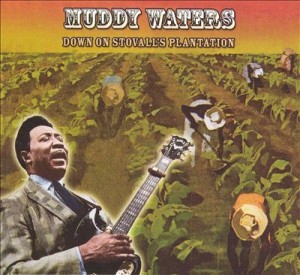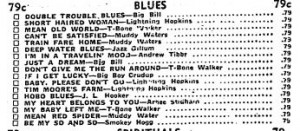As blues gained popularity through publication and performances it became blended with other types of popular music. Blues and rock music were obvious candidates for combination, both drawing on folk instrumentation and sharing similar subjects. In Chicago, which was a hotbed of blues music when many black musicians migrated to Chicago to leave the South. Possibly the most influential musician of the blending is McKinley Morganfield AKA Muddy Waters. Waters got his start at home in Mississippi when Alan Lomax traveled there on behalf of the Library of Congress in 1941 and again in 1942. Waters was later released on the album “Down on Stovall’s Plantation” from these recordings.
 This recording shows us that Muddy Waters is a legit player of the blues from the south and would be taken seriously by white audiences in the North.
This recording shows us that Muddy Waters is a legit player of the blues from the south and would be taken seriously by white audiences in the North.
In 1943, shortly after Lomax’s visit, Waters moved to Chicago in hopes of making it big as a blues musician. As Muddy Waters made his way as a blues performer he made with friends with Big Bill Broonzy who helped Waters become popular. This article from Cultural Equity highlights some of the connection between Muddy Waters and Big Bill Broonzy. Muddy Waters was put on singles in the late 40s and through the 50s in Chicago.  Waters gained popularity from recording Robert John tunes who had been on the blues mind since 1938 from the “Spirituals to Swing” concert in New York (Here’s a short RadioLab episode about this concert and Robert Johnson, it’s great!).
Waters gained popularity from recording Robert John tunes who had been on the blues mind since 1938 from the “Spirituals to Swing” concert in New York (Here’s a short RadioLab episode about this concert and Robert Johnson, it’s great!).
Muddy Waters became very popular in Chicago and was seen as a performer who was keeping the folk in the blues and rock that he was performing. Because he had such a close connection to the south and his history there. The Defender wrote an article to this effect in 1972. Muddy Waters keeps alive an Afro-American culture
